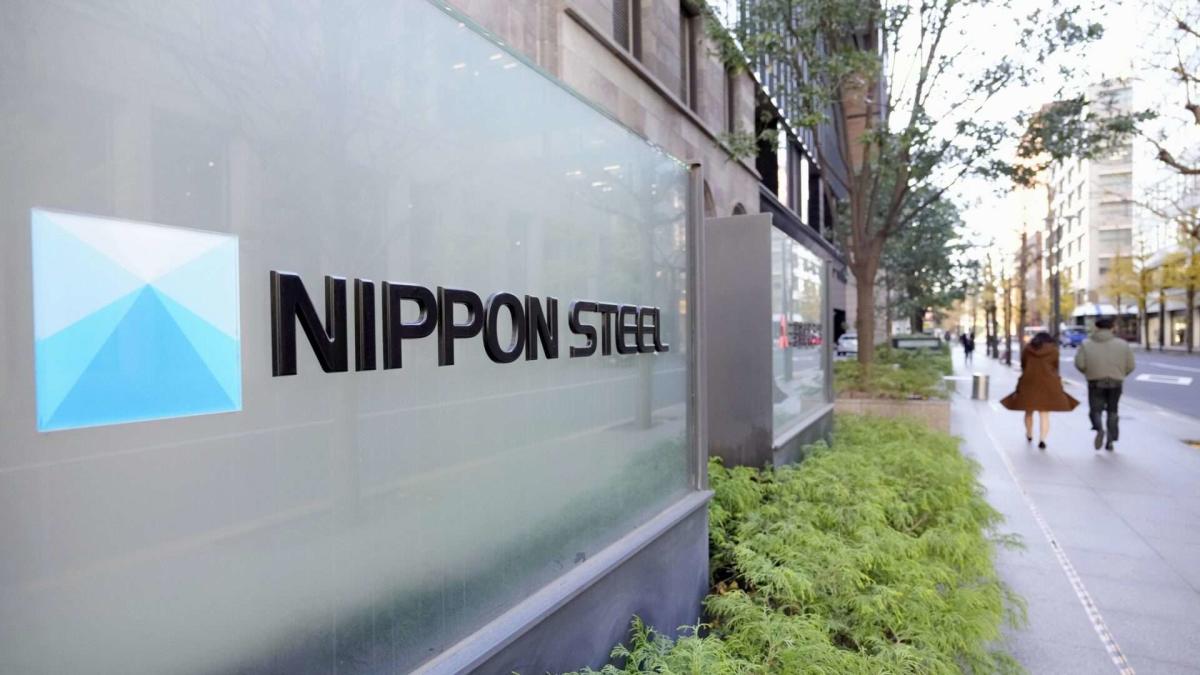Nippon Steel & U.S. Steel Merger: Trump's Role And Future Outlook

Table of Contents
Trump Administration's Trade Policies and Their Impact on Steel
The Trump administration's trade policies significantly impacted the global steel landscape, creating both opportunities and obstacles for a potential Nippon Steel & U.S. Steel merger.
Tariffs and their effect on U.S. Steel's competitiveness
- Increased steel prices: Trump's tariffs on imported steel aimed to protect domestic producers like U.S. Steel. While this initially boosted prices, it also led to:
- Impact on domestic manufacturing: Higher steel costs increased production expenses for manufacturers relying on steel, potentially hindering competitiveness in global markets.
- Retaliatory tariffs from other countries: The tariffs triggered retaliatory measures from other nations, impacting U.S. exports and creating trade tensions.
Trump's "America First" policy prioritized protecting American industries, particularly steel, through protectionist measures. These policies, however, created a complex environment for potential mergers and acquisitions, impacting both the cost of steel and the overall global market dynamic. A merger between Nippon Steel and U.S. Steel would need to navigate the lingering effects of these trade wars.
Negotiations with Japan and their relevance to Nippon Steel
- Trade agreements: The Trump administration's renegotiation of trade agreements with Japan, although not directly impacting steel specifically, altered the overall trading relationship.
- Potential impacts on Japanese steel exports: These renegotiations could have influenced the volume and cost of Japanese steel exports to the U.S., a key factor to consider for any potential merger.
- Existing tensions: While trade negotiations aimed to reduce certain barriers, underlying tensions between the two countries' economic strategies could still impact a potential merger.
Existing trade relationships between the US and Japan, shaped by Trump-era policies, are a crucial consideration. Any potential merger would require a thorough assessment of these relationships and their potential impact on the combined entity's operations and market access.
Analyzing the Potential Benefits of a Nippon Steel & U.S. Steel Merger
A merger between Nippon Steel and U.S. Steel holds the potential for significant synergies and a reshaping of the global steel market.
Synergies and Economies of Scale
- Increased market share: A combined entity would command a substantially larger share of the global steel market, boosting its influence and pricing power.
- Reduced production costs: Consolidating operations and streamlining processes would lead to significant economies of scale, reducing production costs and increasing profitability.
- Potential for innovation: Combining the research and development capabilities of both companies could accelerate innovation in steel production and create new, higher-value products.
The combined entity could optimize production by consolidating facilities, sharing best practices, and streamlining supply chains. This would lead to significant cost reductions and increased efficiency.
Global Market Dominance and Competitive Advantage
- Increased pricing power: Greater market share would translate into greater pricing power, enabling the merged company to command higher prices and improved profit margins.
- Enhanced distribution networks: Combining the existing distribution networks of both companies could create a more efficient and far-reaching system, improving access to global markets.
- Ability to better compete with other global steel producers: A larger, more efficient entity would be better positioned to compete with other major steel producers, potentially driving consolidation within the industry.
The merger would create a powerhouse capable of influencing pricing and outcompeting rivals, fundamentally altering the competitive landscape of the global steel industry.
Potential Challenges and Obstacles to a Nippon Steel & U.S. Steel Merger
Despite the potential benefits, a Nippon Steel & U.S. Steel merger faces significant hurdles.
Regulatory Hurdles and Antitrust Concerns
- Review process by relevant authorities (e.g., FTC, DOJ): The merger would undergo rigorous scrutiny from antitrust regulators in both the U.S. and potentially other jurisdictions.
- Potential for antitrust lawsuits: Concerns about reduced competition and potential price fixing could lead to legal challenges and delays.
- Negotiations with regulatory bodies: The companies would need to negotiate extensively with regulators to address antitrust concerns and secure approval.
Regulatory approval is far from guaranteed. The substantial market share of the combined entity raises significant antitrust concerns, which would need to be addressed strategically.
Cultural Differences and Integration Challenges
- Differing corporate cultures: Integrating two companies with distinct cultures, management styles, and operational practices presents a significant challenge.
- Potential workforce integration issues: Job losses and potential conflicts between employees from different backgrounds need to be carefully managed.
- Potential strategies to mitigate these challenges: Careful planning, transparent communication, and a well-defined integration strategy are crucial to minimize disruption and ensure a smooth transition.
Future Outlook and Predictions for the Steel Industry
The future of the steel industry will be shaped by technological advancements and global economic conditions, both of which would impact any potential merger.
Impact of technological advancements (e.g., green steel)
- Shifting demand patterns: The growing demand for sustainable materials will drive the adoption of "green steel" production methods, impacting both companies' strategies.
- Implications for both companies: Adapting to these changes will require significant investments in research and development and potentially restructuring of operations.
- Potential for disruptive innovation: New technologies could further disrupt the industry, requiring both companies to remain agile and innovative to maintain their competitive edge.
Technological advancements are reshaping the industry's dynamics. The successful merger would need a robust plan for adapting to and leveraging these innovations.
Global economic conditions and their influence
- Global economic growth: Strong global growth would boost steel demand, benefiting a merged entity.
- Recessionary risks: A global recession would significantly reduce demand, potentially impacting the profitability of the merged company.
- Potential for price volatility: Fluctuations in global economic conditions can create price volatility in the steel market, impacting the financial performance of the merged entity.
The global economic climate will be a major factor in determining the success or failure of a hypothetical Nippon Steel & U.S. Steel merger.
Conclusion: The Future of the Nippon Steel & U.S. Steel Merger and its Global Implications
A hypothetical Nippon Steel & U.S. Steel merger presents a complex picture. While the potential benefits—increased market share, economies of scale, and global dominance—are significant, substantial challenges, including regulatory hurdles and cultural integration issues, must be overcome. The lingering impact of the Trump administration's trade policies adds another layer of complexity. The future of the steel industry, driven by technological innovation and global economic trends, will ultimately determine the success or failure of such a merger. We can predict that the path to a successful merger would require careful planning, strategic navigation of regulatory hurdles, and a proactive approach to integrating diverse corporate cultures.
To further understand the implications of a potential "Nippon Steel & U.S. Steel merger," continue your research by exploring industry reports, financial analyses, and expert opinions. The future of this potential union, and its impact on the global steel industry, remains an intriguing and crucial area of study.

Featured Posts
-
 La Liga Da Soerloth Sov Ilk Yarim Saatte 4 Gol
May 26, 2025
La Liga Da Soerloth Sov Ilk Yarim Saatte 4 Gol
May 26, 2025 -
 Investigation Launched New Details Emerge In Lewis Hamiltons F1 Situation
May 26, 2025
Investigation Launched New Details Emerge In Lewis Hamiltons F1 Situation
May 26, 2025 -
 Zwischen Zwei Events Der Hsv Kaempft Um Den Aufstieg
May 26, 2025
Zwischen Zwei Events Der Hsv Kaempft Um Den Aufstieg
May 26, 2025 -
 Toto Wolff Hints At George Russells Mercedes F1 Future
May 26, 2025
Toto Wolff Hints At George Russells Mercedes F1 Future
May 26, 2025 -
 Fujifilm X Half Fun Fresh And Easy To Use
May 26, 2025
Fujifilm X Half Fun Fresh And Easy To Use
May 26, 2025
